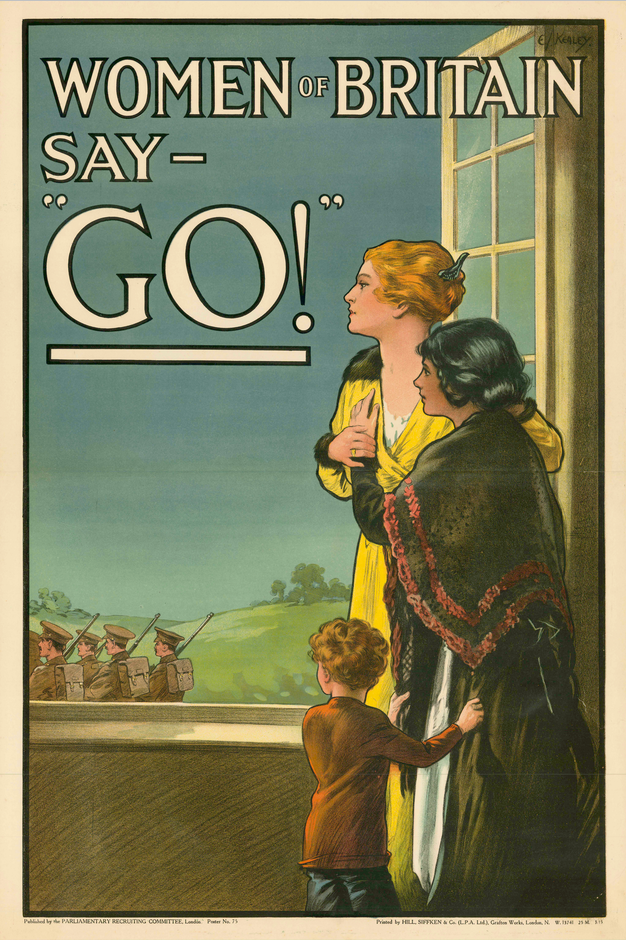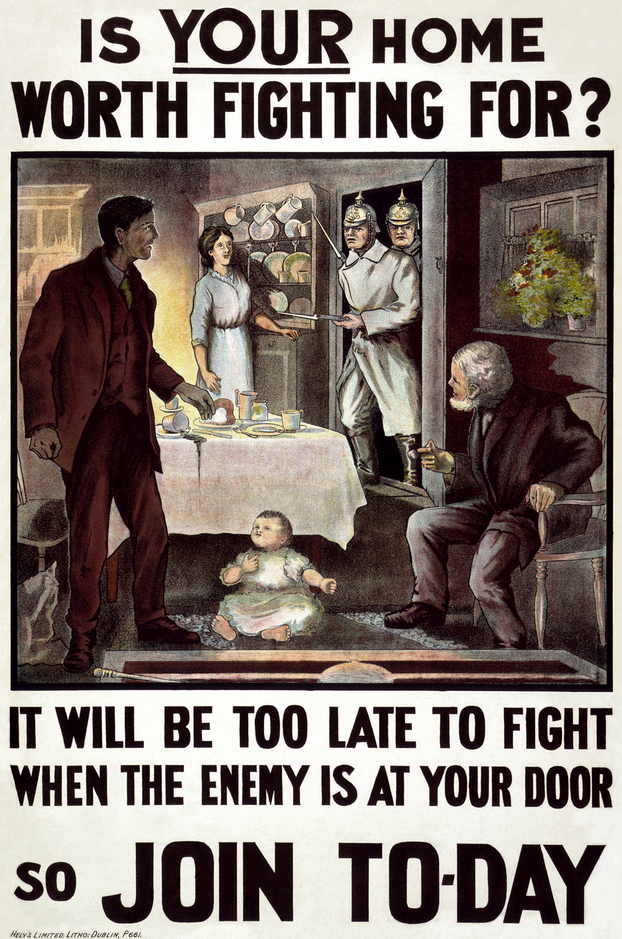

At the beginning of World War I propaganda prepared men to go to war and women to say goodbye to them. War posters like the ones above gave a very strong and simple message: they constantly reminded people to do what was supposed to be their duty. This is why many teenage boys grew up with the belief that they had no choice but to fight for their country, while teenage girls learned that they were expected to support the troops in the best way they could.
2.1 Task 4: Look at
2.1 Task 4: Material, where you find more examples of war posters from different countries. Then read the 10 text snippets below, taken from Rudyard Kipling's poem
For All We Have and Are. This poem was published in
The Times on the 2nd of September 1914 and reprinted afterwards in many other influential newspapers across the English-speaking world. As a recruitment poem it was meant to persuade young men to join the military and risk their lives for their country. Imagine that you work for the British Parliamentary Recruiting Committee in 1914 and
design a war poster based on one or two text snippets from Kipling's poem. Add it
2.1 Task 4: Creative Work.
|
1
For all we have and are,
For all our children's fate,
Stand up and take the war.
|
6
In patience keep your heart,
in strength lift up your hand.
|
|
2
The Hun* is at the gate!
|
7
No easy hope or lies
Shall bring us to our goal,
But iron sacrifice
Of body, will, and soul.
|
|
3
There is nothing left to-day
But steel and fire and stone!
|
8
There is but one task for all—
One life for each to give.
|
|
4
In courage keep your heart,
in strength lift up your hand.
|
9
What stands if Freedom fall?
|
|
5
No law except the Sword
|
10
Who dies if England live?
|
Annotations:
* During WWI German soldiers were often referred to as "Huns" by English or American officers ("Die Hunnen kommen!"). The nickname was meant to show that the enemy was brutal and barbarian.
...........................................................
Sources:
→ Full text of "For All We Have and Are" by Rudyard Kipling
→ Background info: Baldick, Chris. "For All We Have and Are". The Literary Encyclopedia. First published 27 April 2015
[http://www.litencyc.com/php/sworks.php?rec=true&UID=35613, accessed 26 February 2016.]
Illustrations:
(1) Poster, ’Women of Britain say - "Go!" ’, May 1915, United Kingdom, by Parliamentary Recruiting Committee, Hill, Siffken & Co. (L.P.A. Ltd.). Artist: E. J. Kealey. Restored by Adam Cuerden. Source: Wikimedia, Public Domain
(2) Restoration of an Irish poster from WWI, by Hely's Limited (Litho.), Dublin, July 1915. The artist is unknown. Source: Original scan, Library of Congress: http://www.loc.gov/pictures/item/2003668413/